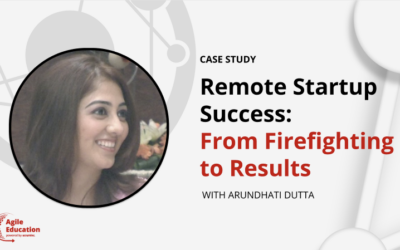Scrum@Scale Case Study
Kickstart a Self-Learning Organization
Learn how sustainable alignment was established via agile portfolio management and iterative big room planning events.
CASE STUDY SNAPSHOT
Trainer Name: Mirko Kleiner
Organization: Localsearch
Organization Size: Medium
Industry: Marketing and Advertising
Topics: Alignment, Continuous Improvement and Impediment Removal
Date: 2018
Website: https://www.lap-alliance.org/
Summary
Localsearch, a.k.a. the Google of Switzerland had become unable to deliver to customers in a timely fashion. With about 800 employees, eight million unique clients, and five million downloads – along with being the phonebook of Switzerland – this organization was financially secure. Multiple mergers in the past had resulted in misalignment of the company culture, agile skills, or systems. There were too many projects in progress that had little or no alignment, therefore, nothing was being delivered. Three cross-functional pilot teams achieved more outcomes than the rest of the organization. That’s when the new CEO made the decision to follow their lead.
The new CEO of localsearch reached out and said that he wanted an agile transformation completed in three days.
Three. Days.
Up for the challenge, Mirko Kleiner and his team discovered the fine line between structure and chaos.
To create a participative transformation in three days with more than 100 people, localsearch started by merging all four engineering departments. They implemented a new agile organization following the known value streams and created a strategic roadmap to start with.
Day 1: Joint challenging the model. The people came together to learn agile values and frameworks through discussions, lightning talks, etc.
Day 2: Teams self-organized into guilds (silo) and sagas (cross-functional).
Day 3: Big room planning allowed for alignment, floorplan based on dependencies, and commitment.
This successful transformation was done by creating alignment and fostering trust. Timeboxing by top-management released energies to achieve. Also, management buy-in and a cross-functional transformation team of leaders (similar to EAT) were essential to the process.
Key Results
- Approx. 100 employees reorganized themselves quickly and were productive right away.
- Sustainable alignment was established via agile portfolio management and iterative big room planning events.
- Maximized involvement and increased happiness occurred because of the collaborative approach and freedom in the framework.
- There is now continuous value delivery
Who Is Mirko Kleiner
Mirko Kleiner is a Registered Scrum and Scrum@Scale Trainer, Agile Coach, Trainer, and Cofounder of flowdays. He works as an independent agile coach and ad interim manager. He has long been an avowed Agilist (Agile Evangelist), but is flexible if necessary to adopt to the given surrounding conditions. After over 17 years of professional experience in various positions in distributed organizations, large-scaled projects and different cultures (India, Russia, Serbia, Romania, West-EU), he is a known expert in setting up and management of distributed agile organizations and solving their challenges. As agile coach on enterprise level he is currently engaged in agile transformations in companies of all sizes. In practice, he saw that sales/procurement organizations still missed an approach to catch up with increased market demands like e.g. time-to-market, innovation, complexity, etc. Lean-agile procurement (LAP) fills this gap and became a global movement with many success stories. LAP isn’t just an improvement of current practices, it’s more kind of a disruption: What used to take MONTHS needs just DAYS NOW!- He predicts that with adaptive partner ecosystems companies will have a advantage; therefore a new, more agile approach for sales/procurement is essential.
More Case Studies
Remote Startup Success: From Firefighting to Results
Agile Education Case Study Remote Startup Success: From Firefighting to Results This case study focuses on a remote startup that faced challenges with disorganized workflows, team burnout, and a lack of a clear product vision. The startup had no Product Owner, leading...
Improve Predictability and Performance: Using Aggregated Velocity Data in Scrum@Scale
Agile Education Case Study Improve Prioritization and Performance: Using Aggregated Velocity Data in Scrum@Scale This case study explores how aggregated velocity data was used to improve the performance, prioritization, and predictability of engineering teams in a...



